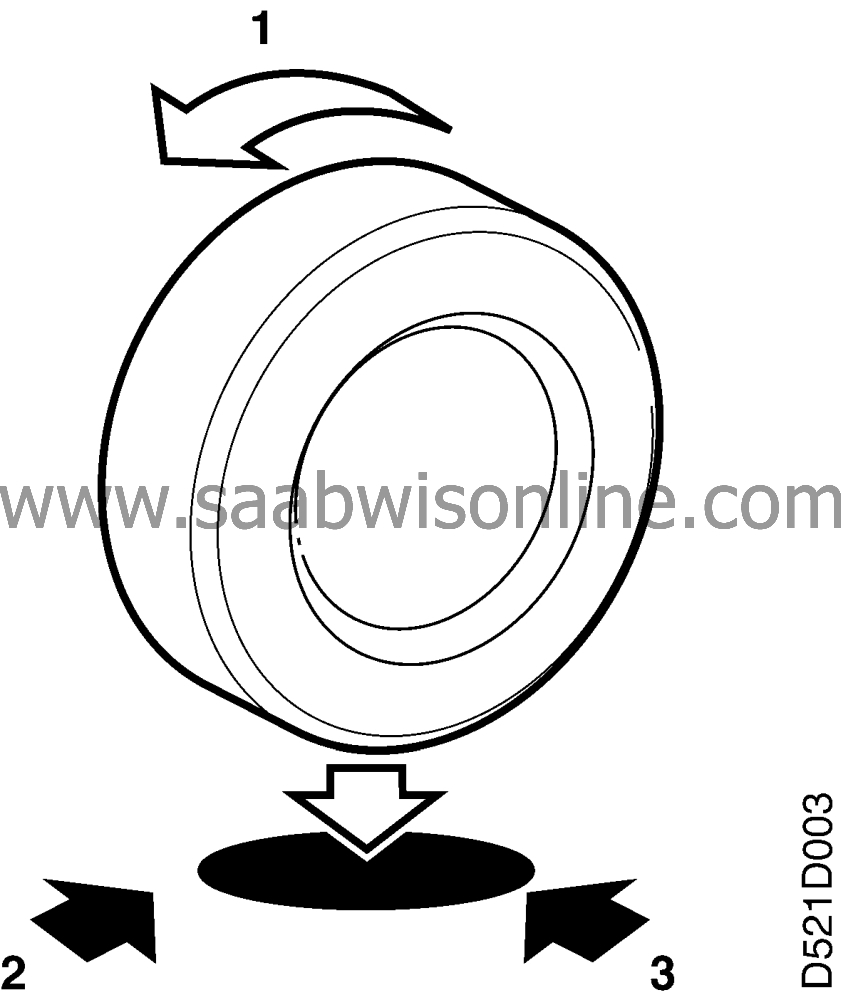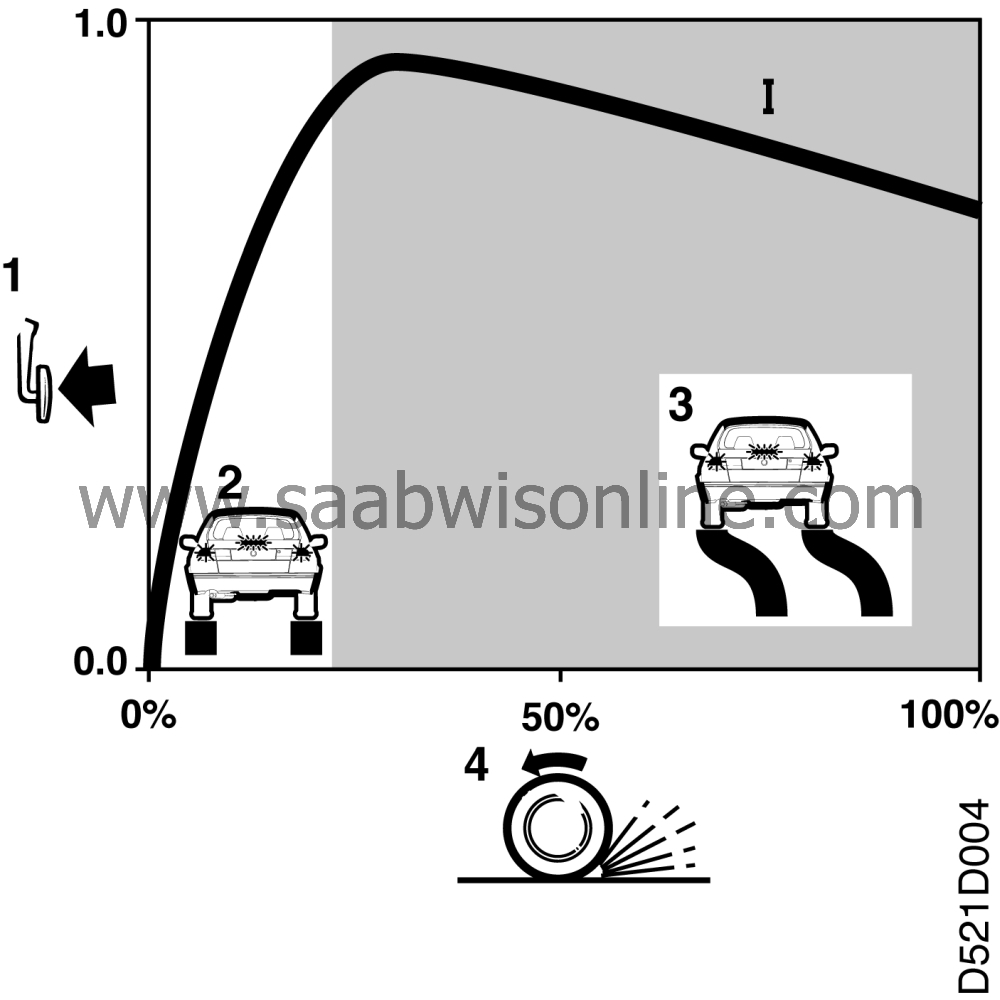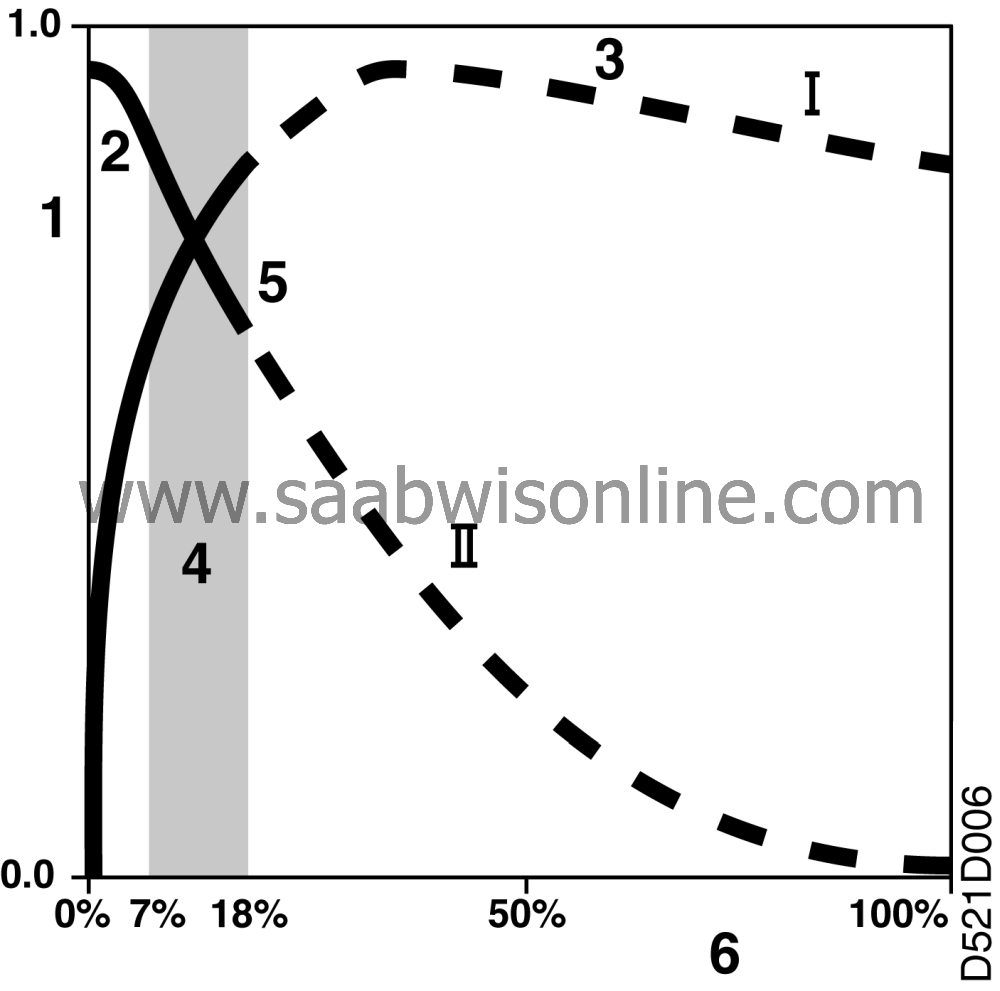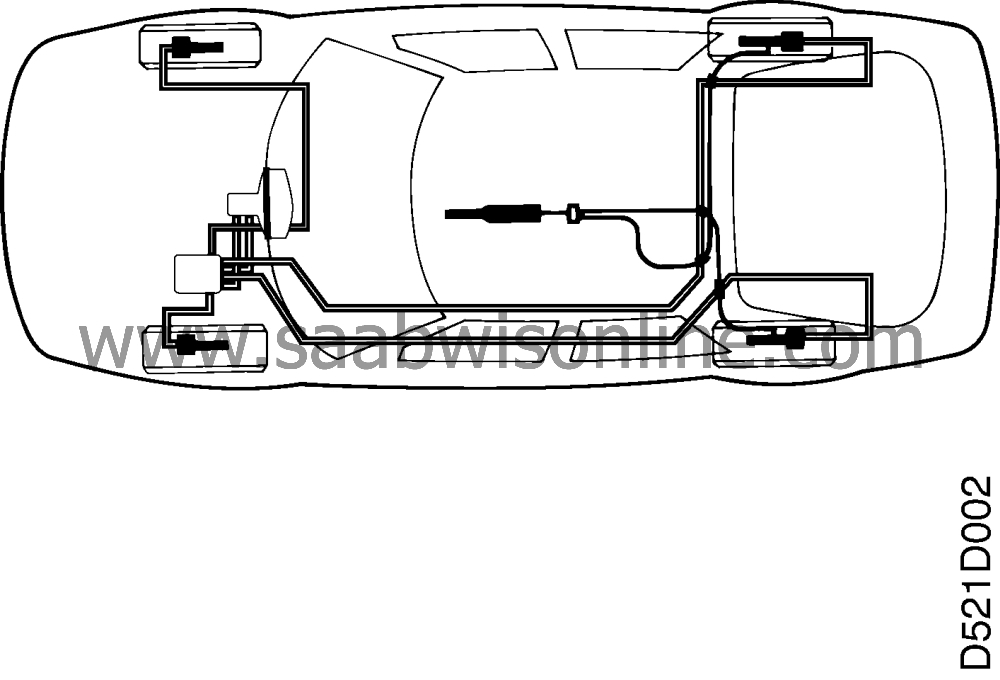Reduced tyre wear

The forces acting on the tyre consist entirely of braking and/or lateral forces.
To understand how the ABS system provides optimal braking with no loss of directional stability, we need to examine the play of forces acting on a wheel when it is braked.

The curve in the diagram shows the relationship between braking force (expressed as a coefficient) and tyre slip (expressed as a percentage).
Braking force is equivalent to the coefficient of adhesion, that is to say the friction between the tyre and the road surface. Each application of braking force gives rise to a certain degree of slip, ranging from 0%% when the wheel rolls freely to 100%% when the wheel is locked.
When the brake is first applied at 0, braking force increases sharply but the degree of slip increases only gradually up to a certain limit. Beyond that point, braking force decreases with increasing slip.

Maximum braking force (coefficient of adhesion) is reached at a point known as the limit of optimum slip.
The section of the curve between 0%% slip and the limit of optimum slip is known as the stable braking zone. The section of the curve between the limit of optimum slip and 100%% slip is know as the unstable braking zone, as stable braking can not be achieved in this zone. This is because the wheel quickly becomes locked after the limit of optimum slip has been reached, unless the braking force is immediately reduced. Slip also occurs when lateral force is applied on the tyre (e.g. on cornering).
Curve II on the diagram shows lateral force as a function of slip. As can be seen, lateral force falls away sharply with increasing slip. At 100%% slip, that is to say when the wheels lock up, no lateral force remains for steering and the driver will no longer have control over the vehicle.

Both curves are shown on the above graph which is superimposed with the range within which the ABS system is operative. During braking, the system allows braking force to increase to a point just before the limit of optimum slip and then prevents it from increasing further. The system then modulates the hydraulic pressure to keep the braking force as close as possible to the optimum value (the limit of optimum slip) regardless of how hard the brake pedal is depressed.
Since the ABS prevents the limit of optimum slip from being exceeded, the tyres never enter the unstable zone. At the same time, some lateral force is preserved to ensure that steering control is retained (curve II).
|







